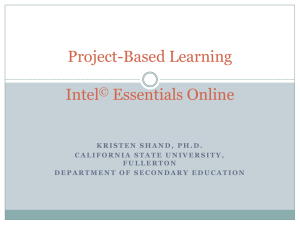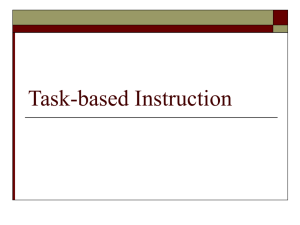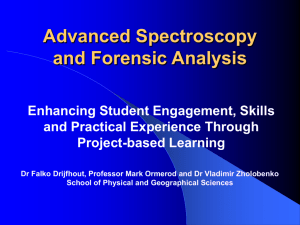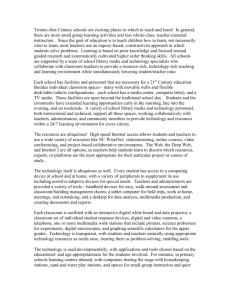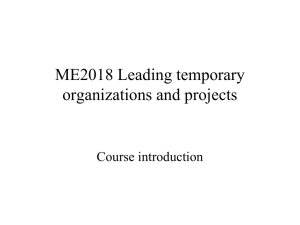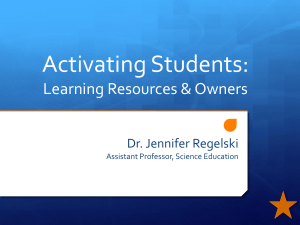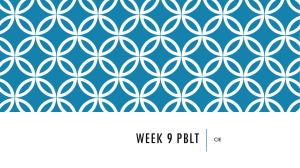- Routledge
advertisement
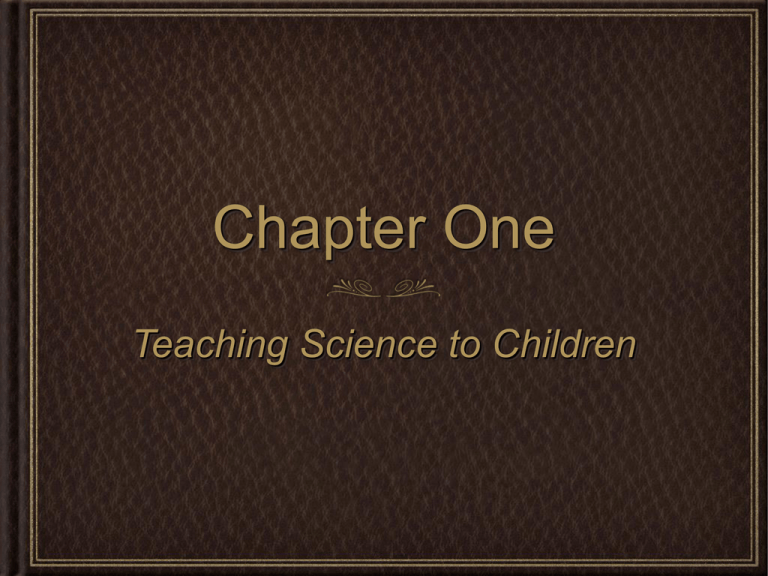
Chapter One Teaching Science to Children Overview of Project-Based Science • In this course you will investigate, practice and plan for: • Science teaching in elementary and middle school using Project-based science • Features of Project-based science teaching and learning • Understanding how Project-based science aligns with national science standards Where’s the other film canister? • From the tray, select up to three objects to place into one film container. Seal the top on the container with tape. • After everyone has filled and sealed their containers, pass the container to another member of your group. Using as many observation methods as possible, try to determine what object(s) are in your team member’s container. Record your guesses. • Construct a model of what is in each of the other canisters. One method of model construction would be to use an empty film canister and test the objects that were on the tray, matching your observations to the containers. • When you think you have identified each of your group member’s objects, observe the containers from other groups and see if your model is useful in identifying other objects. • When you have completed testing your model answer these questions: • What are the various activities or processes that you went through to develop a theory of what is in the film canister? • Without opening the cans and looking inside, how sure can you be that your theory is correct • How does this activity resemble the construction of scientific theories to explain real-world phenomena? How do the methods you used resemble the scientific methods you use in your daily life? What is Science? • What are some of your ideas about defining, describing, or identifying the characteristics of science? What is a “Driving Question”? Characteristics of a Driving Question: • • Feasibility • Worth • Contextualization • Meaning • Ethical • Sustainability Create a course Driving Question • What ideas do you have for a driving question to help focus this course? Develop two or three of your own questions. Share them with your group. Evaluate them based on the criteria for Driving Questions. An Overview of Project-Based Science • What are the characteristics of Projectbased science? • What makes Project-based science different from other ways of learning science? Science Learning Experiences • A. Think back to your elementary and middle school days. Do you recall your teachers teaching science? What do you remember about learning science in early elementary grades? Middle grades? What kinds of topics did your teachers cover? How did they teach science? Did you take field trips to planetariums, zoos, or science museums? Did you conduct “experiments”? Were you required to complete a science fair project? Take notes in your portfolio about what you remember. • B. What science learning experiences are most vivid in your mind? Do you remember stories such as about Newton “discovering” gravity when an apple fell on his head? Write a short paragraph in your portfolio about your most vivid memories of science learning experiences. Case study of a science classroom • Obtain permission from the appropriate officials (usually a school district superintendent, curriculum director, or principal and classroom teacher) at an elementary or middle school. • Observe in the classroom for several days. • • • • • Compare the school’s course of study, curriculum, instructional practices, and assessment techniques with the guidelines proposed by national organizations (such as AAAS, NRC, and NSTA) When you have completed your observations and comparisons, answer these questions. In your opinion, how well is this school meeting suggested goals? In what ways is it falling short? How well is the school implementing the features of project-based science? In what ways is it failing to implement project-based science ideas? What obstacles might you face trying to implement project-based science in this environment. What are the characteristics and challenges of these scenarios? • Carefully read each scenario. As you read, imagine the classroom that is being described. Use your experiences as a science learner and as a teacher to think about how the classrooms described might work. Think about the roles of both the students and the teacher. • Respond to the following questions about each scenario: • In this classroom, what are the student activities and how do the students complete them? • Each scenario describes the work of the teacher in that classroom. What is the teacher doing to help students learn science? • In each scenario, who is responsible for the learning? • What strategies does the teacher use to find out what the students have learned? • Imagine, and then record, the challenges of teaching science in this classroom. Why should children learn science? • A. On paper or using a word processor, create a table with three columns. Label the first column “Things I Did Today,” label the second column “Related Science Concept,” and label the third column “Related Questions.” Take about five minutes to reconstruct what you did since you got up this morning. List as many things as you can remember in the first column. • B. In the second column, identify as many related science concepts as you can. For example, you may have used a curling iron and hair spray to style your hair. The curling iron is heated with electricity, and the hair spray is a chemical, so the related concepts are electricity and chemistry. • C. In the third column, write down related questions for each situation, such as “How can I make hair spray work better?” and “Where does electricity come from?” • D. Reflect upon the list you have constructed. How does it help answer the question “Why should children learn science?” Record your thoughts and your lists in your portfolio. What are your personal goals for science education? • A. Before reading the section on the goals of science education, brainstorm in small groups the goals that you think are important for science education. Try to reach group consensus. Share your group’s goals with the rest of the class. • B. How do the goals of science education differ among your groups? What are the similarities? • C. Think about one national goal already mentioned— the development of scientifically literate citizens. What do you think characterizes a scientifically literate citizen? What does a scientifically literate citizen need to know? What skills does this person need to have? What attitudes should this person possess? How does this goal compare with your group’s goals? Questions about Science Teaching What questions do you now have about learning to teach elementary or middle school science? Include questions on the goals of science education, why young students should learn science, how science should or should not be emphasized in elementary and middle education, and project-based science. •
